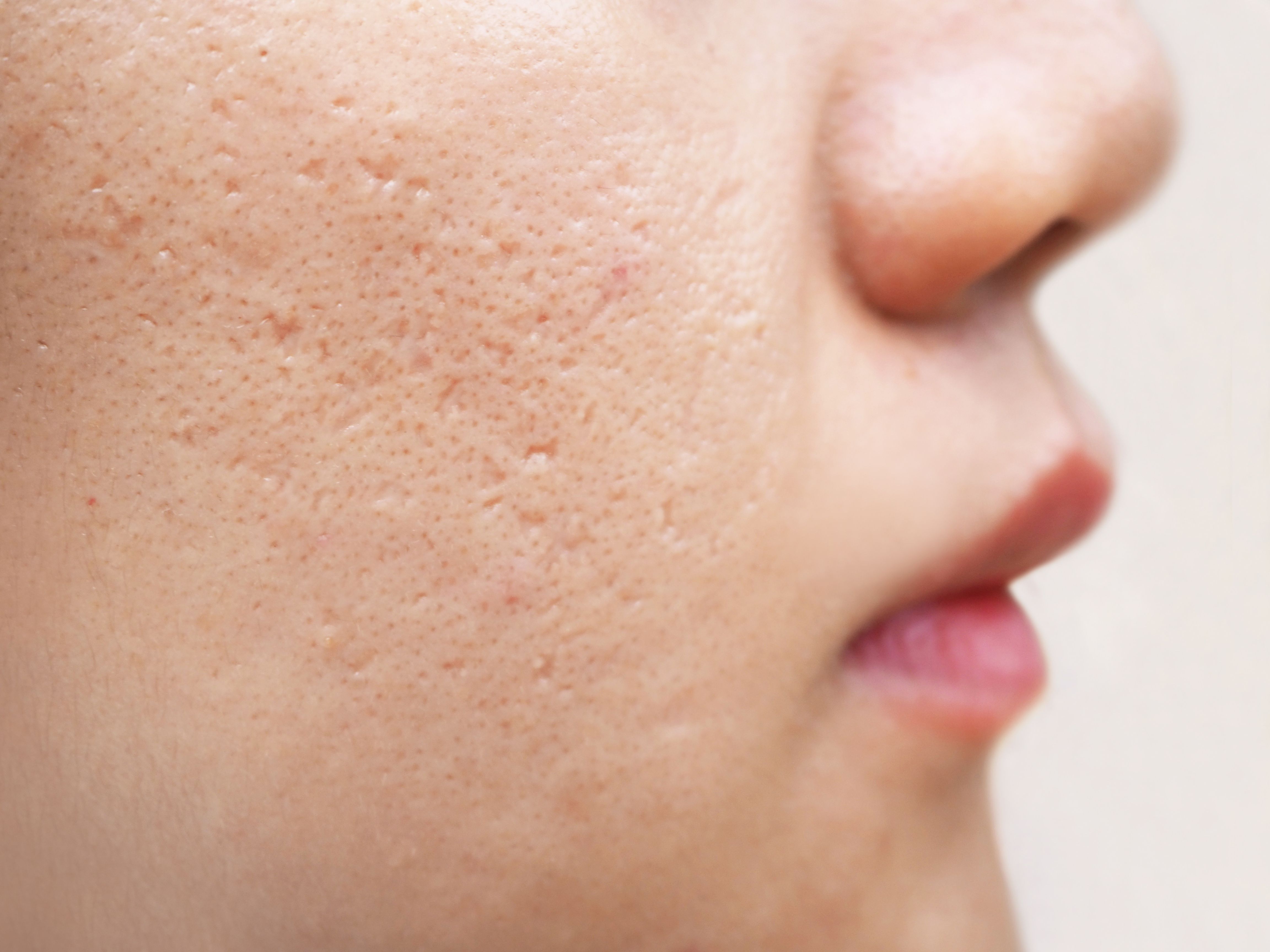- Acne
- Actinic Keratosis
- Aesthetics
- Alopecia
- Atopic Dermatitis
- Buy-and-Bill
- COVID-19
- Case-Based Roundtable
- Chronic Hand Eczema
- Chronic Spontaneous Urticaria
- Drug Watch
- Eczema
- General Dermatology
- Hidradenitis Suppurativa
- Melasma
- NP and PA
- Pediatric Dermatology
- Pigmentary Disorders
- Practice Management
- Precision Medicine and Biologics
- Prurigo Nodularis
- Psoriasis
- Psoriatic Arthritis
- Rare Disease
- Rosacea
- Skin Cancer
- Vitiligo
- Wound Care
News
Article
Comparing Energy-Based Devices for Acne
Author(s):
Although EBDs provided improvements over controls, they did not match the sebum reduction levels achieved by isotretinoin or hormonal therapies.
Image Credit: © Peakstock - stock.adobe.com

Acne vulgaris (AV) is often managed using topical and oral medications, or physical treatments such as lights or lasers.1 The only treatments known to effectively reduce sebum production are hormonal therapies and oral isotretinoin, but both are associated with significant risks including feminization and teratogenicity.2 Researchers behind a recent review recognized this need for safer sebum-regulating treatments, turning to the use of energy-based devices (EBDs).
EBDs are a rapidly evolving field, with the technology now being used to treat AV by targeting cutibacterium acnes (C. acnes) bacteria, reduce inflammation, or impact sebaceous gland (SG) activity with variable efficacy. Early use of EBDs for AV included the use of natural ultraviolet (UV) light, visible-light lasers, and intense pulsed light (IPL) devices, either as standalone treatments or in conjunction with photodynamic therapy (PDT).3 Later treatments, such as infrared lasers and radiofrequency (RF) technologies utilize heat to cause thermal destruction of the glands, however a “significant” advancement is the FDA-approved 1726-nm laser (marketed as AviClear and Accure) that targets and destroys SGs through photothermolysis. This is not only effective in reducing sebum production, but also results in fewer adverse events than earlier EBDs.
Research on the effects of EBDs on casual sebum level (CSL) is limited, highlighting to researchers a need for comprehensive data analysis to gain insights.With this in mind, the review evaluated the effects of light, PDT, laser, and RF treatments on CSL in facial AV, comparing these results with other acne treatments and controls.4
Methods
A search was conducted across Embase, MEDLINE, Web of Science, and CENTRAL using specific key phrases. Results were screened using Covidence, with 2 authors reviewing independently and resolving disagreements with a third reviewer.
Data collection involved recording study details, demographics, intervention specifics, and sebum measurements, with follow-up data used when available. The primary outcome measured was the percentage reduction in sebum levels from baseline. Studies were categorized into light therapy, PDT, laser therapy, and RF therapy, and further subdivided based on their comparison frameworks for analysis.
Results
After an extensive search, 23 studies were ultimately includedin the final analysis. These studies were categorized into 4 intervention groups: Light therapy (4 studies), PDT (9 studies), Laser therapy (5 studies), and RF (5 studies). The included studies involved 559 patients, with a mean age of 24.2 years, ranging from 12 to 52 years, and predominantly mild to moderate acne. Sebum levels, measured using CSL (corneum stratum lipid) assessments, were recorded from 510 participants, mainly on the cheeks.
Researchers stated that light therapy, such as blue light, resulted in a 60.9% reduction in CSL, while blue-red LED treatments achieved a 19.9% reduction, and red light treatments led to a 43% reduction. PDT treatments were also reported to have significant efficacy, with ALA-bu cream and daylight PDT achieving a 32.6% reduction. PDT with green light and blue-red LED resulted in reductions of 34.1% and 37.4%, respectively, although some PDT treatments, like ALA and MAL-PDT, showed no significant CSL reductions. Laser therapy, particularly Nd:YAG laser, reportedly resulted in a 27.7% reduction in CSL, and combined laser and light treatments showed a 41% reduction compared to blue light alone.
RF therapy showed a 23.1% CSL reduction with nonablative monopolar RF. Researchers found combining fractional microneedle RF with other treatments often led to greater CSL reductions than single treatments. Overall, the analysis found PDT and laser therapies were notably effective, with light and RF therapies also demonstrating significant reductions but varying in their effectiveness.
Conclusion
While achieving a 30%to 50% reduction in sebum is necessary for a significant decrease in acne severity, researchers stated that traditional treatments like isotretinoin and hormonal therapies offer the most substantial reductions, with up to 90% and 75% respectively. Among emerging treatments, the analysis found that PDT and RF therapies consistently reduce sebum levels by 30%–40%, whereas laser therapies, particularly 1450-nm DL, show reductions of 40%–48%. Light therapy results are more variable, often due to rapid C. acnes reproduction in overactive sebaceous glands.
Though EBDs do not match the sebum reduction of isotretinoin or hormonal therapies, researchers stated they still provide significant improvements over controls. They found challenges in CSL measurement, including site, environment, and methodology, highlighted the need for standardized protocols. They suggested that future research should address these issues, including the potential of lesser-studied lasers, and focus on optimizing treatment parameters and postprocedural care to ensure effective, safe, and personalized acne management.
What do you think about this comparison? Email DTEditor@mmhgroup.com to share your insight and experiences.
References
- Liu Y, Jiang W, Tang Y, et al. An optimal method for quantifying the facial sebum level and characterizing facial sebum features. Skin Res Technol. 2023;29(9):e13454. doi:10.1111/srt.13454
- Del Rosso JQ, Kircik L. The primary role of sebum in the pathophysiology of acne vulgaris and its therapeutic relevance in acne management. J Dermatolog Treat. 2024;35(1):2296855. doi:10.1080/09546634.2023.2296855
- Sakamoto FH, Lopes JD, Anderson RR. Photodynamic therapy for acne vulgaris: a critical review from basics to clinical practice: part I. Acne vulgaris: when and why consider photodynamic therapy?.J Am Acad Dermatol. 2010;63(2):183-194. doi:10.1016/j.jaad.2009.09.056
- Jaalouk D, Pulumati A, Algarin YA, et al. The impact of energy-based devices on sebum in acne vulgaris: A systematic review. J Cosmet Dermatol. August 11, 2024. doi:10.1111/jocd.16466
Newsletter
Like what you’re reading? Subscribe to Dermatology Times for weekly updates on therapies, innovations, and real-world practice tips.











